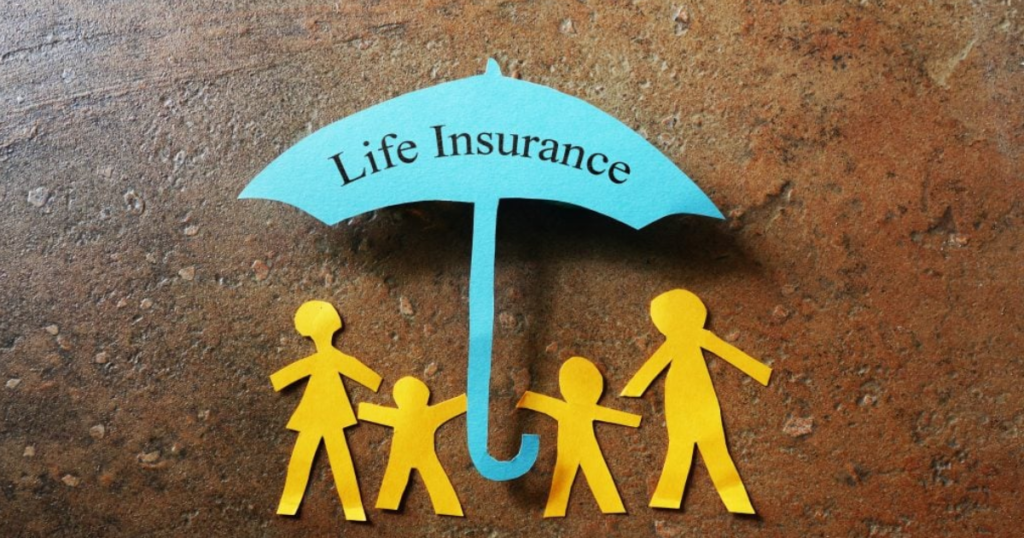
Life insurance is a type of insurance that pays out a sum of money to your beneficiaries if you die or are diagnosed with a terminal illness during the term of the policy. Life insurance can help your loved ones cope with the financial impact of your death, such as paying off debts, mortgages, funeral costs, and living expenses. Life insurance can also provide peace of mind and security for your family during a difficult time.
Related articles
1- Principal Financial Group 401k
2- Certified Financial Advisor
There are different types of life insurance policies available, depending on your needs and preferences.
Some of the most common types are:
- Term life insurance: This type of policy covers you for a fixed period of time, such as 10, 20, or 30 years. If you die within the term, the policy pays out a lump sum to your beneficiaries. If you survive the term, the policy expires and does not pay out anything. Term life insurance is usually cheaper than other types of life insurance, but it does not offer any cash value or savings component1.
- Whole life insurance: This type of policy covers you for your entire lifetime, as long as you pay the premiums. If you die, the policy pays out a lump sum to your beneficiaries. If you live, the policy accumulates cash value over time, which you can access through loans or withdrawals. Whole life insurance is usually more expensive than term life insurance, but it offers guaranteed death benefit, cash value growth, and fixed premiums2.
- Universal life insurance: This type of policy is similar to whole life insurance, but it offers more flexibility and options. You can adjust the amount and frequency of your premiums, as well as the death benefit and cash value of your policy. You can also invest part of your cash value in various funds and earn interest based on market performance. Universal life insurance is usually more complex and risky than whole life insurance, but it offers potential for higher returns and lower costs3.
These are some of the most common types of life insurance policies. However, there may be other types of life insurance policies that cater to different needs and preferences, such as joint life insurance, over 50s life insurance, or critical illness cover4. Therefore, it is important to compare different quotes and options from various providers before choosing a life insurance policy that suits your goals and budget. You can use online tools such as MoneySuperMarket or Aviva to compare different quotes and options from various providers. You should also read the fine print of the policy document carefully to understand the terms and conditions, exclusions, limitations, and complaints procedures of the policy.
Life Insurance: What It Is, How It Works, and How To Buy a Policy
Life insurance is a type of insurance that pays out a sum of money to your beneficiaries if you die or are diagnosed with a terminal illness during the term of the policy. Life insurance can help your loved ones cope with the financial impact of your death, such as paying off debts, mortgages, funeral costs, and living expenses. Life insurance can also provide peace of mind and security for your family during a difficult time.
There are different types of life insurance policies available, depending on your needs and preferences.
To buy a life insurance policy, you need to follow these steps:
- Determine how much coverage you need. You can use online tools such as MoneySuperMarket or Aviva to compare different quotes and options from various providers. You can also consult a financial planner or an insurance agent to help you assess your needs and find the best policy for you.
- Shop around for the best policy and price. You can use online tools such as MoneySuperMarket or Aviva to compare different quotes and options from various providers. You can also contact an independent broker or agent who can offer unbiased advice and access to multiple insurers. You should also check the ratings and reviews of the providers to get an idea of their service quality and claims performance.
- Be honest and accurate when applying for a policy. You will be asked to provide personal information such as your age, gender, health history, lifestyle habits, occupation, hobbies, and family history. This information is used by the insurer to determine your risk level and premium rate. You need to be honest and accurate when answering these questions because if you lie or omit any relevant information, the insurer may reject your application or deny your claim in the future.
- Review your policy regularly and update it as needed. Your life circumstances may change over time due to events such as marriage, divorce, childbirth, retirement, inheritance, or illness. These changes may affect your coverage needs and preferences. Therefore, you should review your policy regularly (at least once a year) and update it as needed to reflect your current situation and goals.
10 Things You Absolutely Need To Know About Life Insurance
Life insurance is one of the most important financial products that you can buy to protect yourself and your loved ones. However, many people are confused or misinformed about how life insurance works, what benefits it offers, and how to choose the right policy. To help you make an informed decision.
here are 10 things you absolutely need to know about life insurance:
- If anyone relies on you financially, you need life insurance. Life insurance is not just for the breadwinner of the family. It is also for anyone who provides valuable services or support to others, such as a spouse, a parent, a child, a business partner, or an employee. If you die unexpectedly, life insurance can help your dependents cope with the financial impact of your loss, such as paying off debts, mortgages, funeral costs, education expenses, and living expenses1. Life insurance can also give you peace of mind and security that your loved ones will be taken care of after you are gone.
- There are different types of life insurance policies. The two main categories of life insurance are term and permanent. Term life insurance covers you for a specific period of time, usually between 10 to 30 years. If you die within the term, the policy pays out a lump sum to your beneficiaries. If you survive the term, the policy expires and does not pay out anything. Term life insurance is usually cheaper than permanent life insurance, but it does not offer any cash value or savings component2. Permanent life insurance covers you for your entire lifetime, as long as you pay the premiums. If you die, the policy pays out a lump sum to your beneficiaries. If you live, the policy accumulates cash value over time, which you can access through loans or withdrawals. Permanent life insurance is usually more expensive than term life insurance, but it offers guaranteed death benefit, cash value growth, and fixed premiums3. There are different types of permanent life insurance with different features, such as whole life, universal life, and variable life.
- You need to determine how much coverage you need. The amount of life insurance coverage you need depends on various factors, such as your income, expenses, debts, assets, liabilities, goals, and dependents. A common rule of thumb is to multiply your annual income by 10 to 15 times4. However, this may not be enough or too much for your specific situation. You should consider using online tools such as MoneySuperMarket or Aviva to compare different quotes and options from various providers. You should also consult a financial planner or an insurance agent to help you assess your needs and find the best policy for you.
- You need to shop around for the best policy and price. Life insurance policies vary widely in terms of benefits, features, costs, and exclusions. Therefore, it is important to compare different policies from different providers before choosing one that suits your needs and budget. You can use online tools such as MoneySuperMarket or Aviva to compare different quotes and options from various providers. You can also contact an independent broker or agent who can offer unbiased advice and access to multiple insurers. You should also check the ratings and reviews of the providers to get an idea of their service quality and claims performance.
- You need to be honest and accurate when applying for a policy. When you apply for a life insurance policy, you will be asked to provide personal information such as your age, gender, health history, lifestyle habits, occupation, hobbies, and family history. This information is used by the insurer to determine your risk level and premium rate. You need to be honest and accurate when answering these questions because if you lie or omit any relevant information, the insurer may reject your application or deny your claim in the future. You should also review your application carefully before signing it and keep a copy for your records.
- You need to review your policy regularly and update it as needed. Life insurances is not a one-time purchase that you can forget about after buying it. Your life circumstances may change over time due to events such as marriage, divorce, childbirth, retirement, inheritance, or illness. These changes may affect your coverage needs and preferences. Therefore, you should review your policy regularly (at least once a year) and update it as needed to reflect your current situation and goals. You may be able to increase or decrease your coverage amount or term length; add or remove riders (optional benefits); change your beneficiaries; or switch from one type of policy to another.
- You need to understand the terms and conditions of your policy. Life insurances policies are legal contracts that contain various terms and conditions that govern how they work and what they cover. You need to understand these terms and conditions before buying a policy and after receiving it.
Some of the key terms and conditions that you should pay attention to are:
- The premium: This is the amount of money that you pay to the insurer for your policy. The premium may be paid monthly, quarterly, annually, or in a single lump sum. The premium may be fixed or variable depending on the type of policy and the market performance.
- The death benefit: This is the amount of money that the policy pays out to your beneficiaries if you die while covered. The death benefit may be level (the same throughout the term) or decreasing (reduces over time). The death benefit may also be subject to taxes and fees depending on the policy and the jurisdiction.
- The cash value: This is the amount of money that accumulates in your policy over time as a savings component. The cash value may earn interest based on a fixed rate or a variable rate depending on the type of policy and the market performance. You can access your cash value through loans or withdrawals, but this may reduce your death benefit and incur taxes and fees.
- The riders: These are optional benefits that you can add to your policy for an extra cost. Some common riders are accidental death benefit, disability income, critical illness, waiver of premium, and guaranteed insurability. Riders can enhance your coverage and provide additional protection for specific situations.
- The exclusions: These are situations or events that are not covered by your policy. Some common exclusions are suicide, war, fraud, criminal activity, and high-risk activities. Exclusions can limit your coverage and affect your claim eligibility.
- You need to name your beneficiaries and keep them updated. Your beneficiaries are the people or entities that you choose to receive the death benefit from your policy if you die while covered. You can name one or more beneficiaries, and you can specify how much each one will receive. You can also name contingent beneficiaries who will receive the death benefit if your primary beneficiaries die before you. You should name your beneficiaries clearly and accurately, and keep them updated as your life circumstances change. You should also inform your beneficiaries about your policy and where to find it in case of your death.
- You need to pay your premiums on time and in full. Your premiums are the payments that you make to the insurer for your policy. Your premiums are determined by various factors such as your age, health, lifestyle, coverage amount, term length, and type of policy. Your premiums may be fixed or variable depending on the type of policy and the market performance. You need to pay your premiums on time and in full according to the schedule agreed upon with the insurer. If you miss a payment or pay less than the required amount, you may lose your coverage or face penalties such as late fees, interest charges, reduced benefits, or lapse of policy. If your policy lapses, you may lose all the benefits and cash value that you have accumulated, and you may have to reapply for a new policy with higher premiums and stricter underwriting.
- You need to file a claim if you die while covered. A claim is a request for payment from the insurer based on the terms and conditions of your policy. If you die while covered by your policy, your beneficiaries or their representatives need to file a claim with the insurer to receive the death benefit.
To file a claim, they need to provide various documents such as:
- A certified copy of the death certificate
- A completed claim form
- A copy of the policy document
- Proof of identity and relationship of the beneficiaries
- Any other documents required by the insurer
The insurer will review the claim and verify the information provided. If the claim is approved, the insurer will pay out the death benefit according to the instructions given by you or your beneficiaries. If the claim is denied, the insurer will provide a reason for rejection and inform about any appeal options available.
About the Author






0 Comments